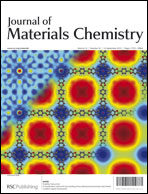Bismuth ferrites have been prepared using a hydrothermal method in a reaction solution containing a mineralizer with various ratios of KOH/NaOH. The phases and morphology of the bismuth ferrites were examined for reaction systems with two different molar ratios of Bi3+/Fe3+, 1 and 1/2. For the reaction system of Bi3+/Fe3+ = 1, we were able to tune the mean thickness of Bi2Fe4O9 plates by varying the ratios of KOH/NaOH. For the reaction system of Bi3+/Fe3+ = 1/2, the main phase transferred from mixed BiFeO3 and Fe2O3 to Bi2Fe4O9 when the ratio of KOH/NaOH decreased to less than 1. The morphology of Bi2Fe4O9, in this case, is more rectangular and block-like with dominating {001} facets. The relatively faster kinetics of the Bi2Fe4O9 formation triggered by the presence of sodium ions determines the available concentration of Fe3+ ions for further growth which, in turn, affects the mean thickness of Bi2Fe4O9 plates. The energy bandgaps of Bi2Fe4O9 plates, which increase from 2.18 eV to 2.27 eV with decreasing thicknesses, lie in the range of visible-light spectra and are suitable for the application of visible-light photocatalyst.

You have access to this article
 Please wait while we load your content...
Something went wrong. Try again?
Please wait while we load your content...
Something went wrong. Try again?


 Please wait while we load your content...
Please wait while we load your content...